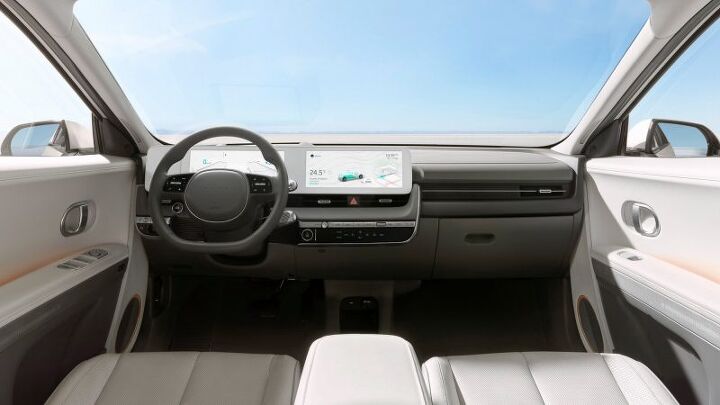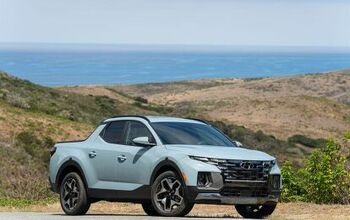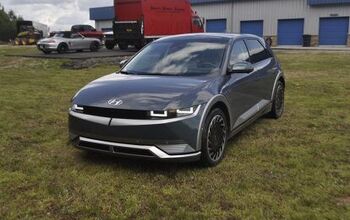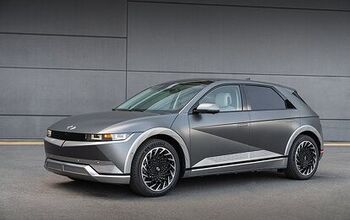The Right Spec: 2022 Hyundai IONIQ 5

Viewed in a vacuum, especially through the filtered lens of an online picture, the Hyundai IONIQ 5 might appear to be a hatchback roughly the size of a VW Golf. In reality, it’s a lot more crossover-like inside and out, with the added bonus of seating flexibility that eliminates a space-hogging center console which creates a spiritual successor to the old-school bench seat.
There is a quartet of trims offered in our market, starting with the $39,700 SE Standard Range with its single motor and rear-wheel drive.
That’s good for 168 horsepower and an estimated 220 miles from its 58.0-kWh battery pack. If those numbers aren’t appealing, an extra $3,950 will net the SE trim (sans the ‘Standard Range’ moniker) which has a 77.4-kWh battery and approximately 300 miles of range. Interestingly, a rear-drive IONIQ 5 with the larger battery makes 225 horses, pushing the all-electric car to 60 mph from rest in about 7.4 seconds according to Hyundai.
Looking for dual motors and 320 horsepower? You’ll need to upgrade to an all-wheel-drive model, a configuration offered on all trims save for the entry-level SE Standard Range. This is a wise decision by Hyundai since it means customers can get the most powerful options without having to pop for a bucks-deluxe trim level. Note that, thanks to extra weight and other gubbins, the estimated range drops to an indicated 256 miles in the all-wheel-drive model. The least expensive AWD wears a sticker price of $47,550.
Externally, there’s not a ton of difference between the four trims, meaning your snooty neighbors won’t know the difference if you bought the least- or most-expensive IONIQ 5. There’s something to be said for creative design, a signature characteristic of this car with its dot-matrix fore and aft lighting which somehow manages to recall sealed beam headlamps but in a way that’s thoroughly modern. The top two trims do feature a unique-to-them front ‘v’ light bar and some extra silver-look garnish.
Inside, the SE is this car’s only trim with cloth seats; if it’s that upholstery you’re after, go ahead and end your search right there. All trims get heated seats, a large 12.3-inch infotainment touchscreen paired with an equal-size digital gauge cluster, dual-zone climate, and safety nannies like smart cruise control. The SEL sets itself apart by including comforts like wireless device charging and a heated steering wheel plus 2nd-row ventilation and a power liftgate.
Limited trim ($50,600 or $54,500 with all-wheel drive) adds vehicle-to-load technology via a two-way onboard charger in the second row. This permits owners to use their car as an enormous battery pack, allowing the electric car to power everyday items when it would otherwise be sitting idle. Whether this is a selling point is up to individual preferences, but we can think of ample opportunities to press this into service both on the road and at home. Typical comfort stuff like a heads-up display and Bose audio also pop up on the Limited.
An all-wheel-drive SEL and rear-wheel drive Limited both come in right around 50 grand, making for an interesting choice of vehicles. The former has a lot more power and can whip to 60 mph in about five seconds, while the latter has braggable-to-EV-friends features like being able to power items in your home. We’d choose the extra power and AWD grip, naturally.
Please note the prices listed here are in Yankee bucks and are currently accurate for base prices exclusive of any fees, taxes, or rebates. Your dealer may (and should) sell for less (obscene market conditions notwithstanding). Keep your foot down, bone up on available rebates, and bargain hard.
[Images: Hyundai]

Matthew buys, sells, fixes, & races cars. As a human index of auto & auction knowledge, he is fond of making money and offering loud opinions.
More by Matthew Guy
Latest Car Reviews
Read moreLatest Product Reviews
Read moreRecent Comments
- El scotto No rag-top, no rag-top(s) = not a prestigious car brand. Think it through. All of the high-end Germans and Lexus have rag-tops. Corvette is really its own brand.World-leading engines. AMG, M, S and well Lexus is third-world tough. GM makes one of the best V-8s in the world in Bowling Green. But nooooo, noooo, we're GM only Corvettes get Corvette engines. Balderdash! I say. Put Corvette engines in the top-tier Cadillacs. I know GM could make a world-class 3.5 liter V-6 but they don't or won't. In the interior everything that gets touched, including your butt, has to feel good. No exceptions.Some think that those who pay above MSRP and brag about it are idiots. Go the opposite direction, and offer an extended 10-year 100,000-mile factory warranty. At a reasonable price. That's Acura's current business model.
- Carrera 2014 Toyota Corolla with 192,000 miles bought new. Oil changes every 5,000 miles, 1 coolant flush, and a bunch of air filters and in cabin air filters, and wipers. On my 4th set of tires.Original brake pads ( manual transmission), original spark plugs. Nothing else...it's a Toyota. Did most of oil changes either free at Toyota or myself. Also 3 batteries.2022 Acura TLX A-Spec AWD 13,000 miles now but bought new.Two oil changes...2006 Hyundai Elantra gifted from a colleague with 318,000 when I got it, and 335,000 now. It needed some TLC. A set of cheap Chinese tires ($275), AC compressor, evaporator, expansion valve package ( $290) , two TYC headlights $120, one battery ( $95), two oil changes, air filters, Denso alternator ( $185), coolant, and labor for AC job ( $200).
- Mike-NB2 This is a mostly uninformed vote, but I'll go with the Mazda 3 too.I haven't driven a new Civic, so I can't say anything about it, but two weeks ago I had a 2023 Corolla as a rental. While I can understand why so many people buy these, I was surprised at how bad the CVT is. Many rentals I've driven have a CVT and while I know it has one and can tell, they aren't usually too bad. I'd never own a car with a CVT, but I can live with one as a rental. But the Corolla's CVT was terrible. It was like it screamed "CVT!" the whole time. On the highway with cruise control on, I could feel it adjusting to track the set speed. Passing on the highway (two-lane) was risky. The engine isn't under-powered, but the CVT makes it seem that way.A minor complaint is about the steering. It's waaaay over-assisted. At low speeds, it's like a 70s LTD with one-finger effort. Maybe that's deliberate though, given the Corolla's demographic.
- Mike-NB2 2019 Ranger - 30,000 miles / 50,000 km. Nothing but oil changes. Original tires are being replaced a week from Wednesday. (Not all that mileage is on the original A/S tires. I put dedicated winter rims/tires on it every winter.)2024 - Golf R - 1700 miles / 2800 km. Not really broken in yet. Nothing but gas in the tank.
- SaulTigh I've got a 2014 F150 with 87K on the clock and have spent exactly $4,180.77 in maintenance and repairs in that time. That's pretty hard to beat.Hard to say on my 2019 Mercedes, because I prepaid for three years of service (B,A,B) and am getting the last of those at the end of the month. Did just drop $1,700 on new Michelins for it at Tire Rack. Tires for the F150 late last year were under $700, so I'd say the Benz is roughly 2 to 3 times as pricy for anything over the Ford.I have the F150 serviced at a large independent shop, the Benz at the dealership.



































Comments
Join the conversation
Saw my first one just yesterday, a very handsome car, looks far more expensive than it is. Nice size and packaging and much more like a wagon than an SUV.
I like the interior. But I don't see the value over let's say a Mach-E or even a Bolt EUV